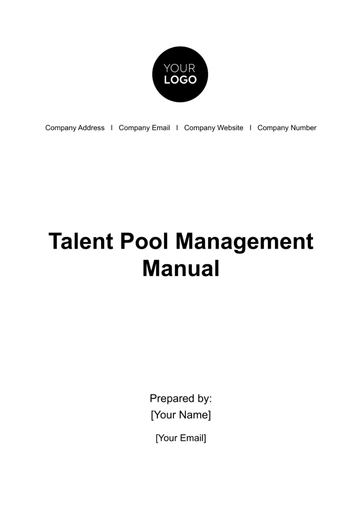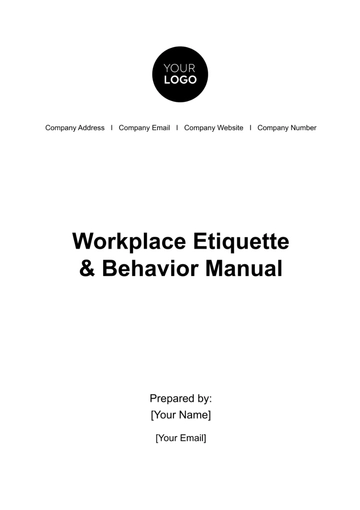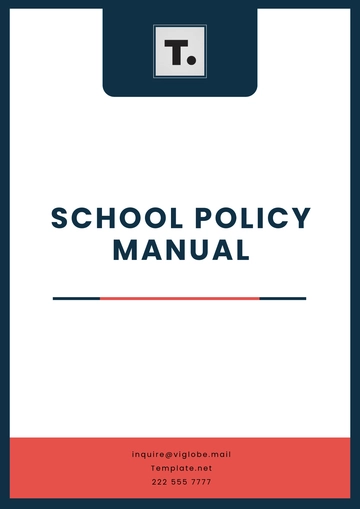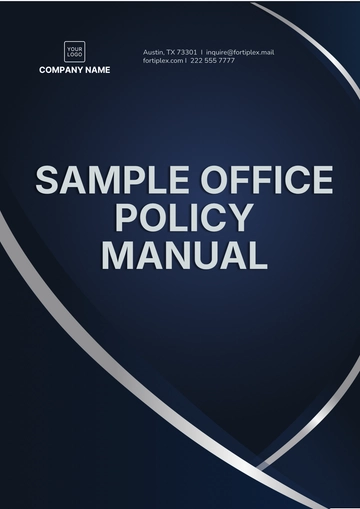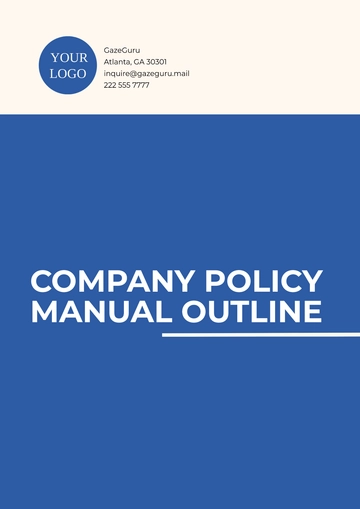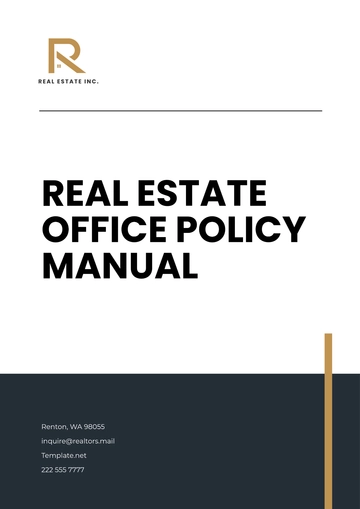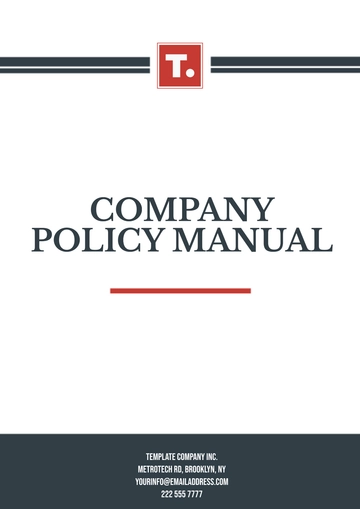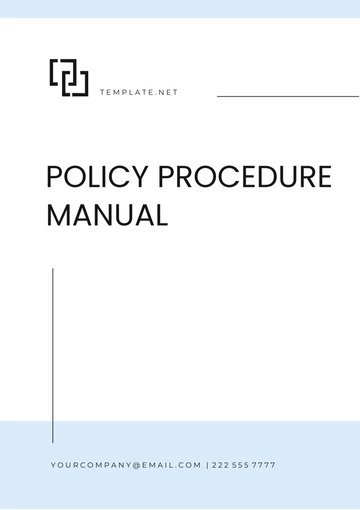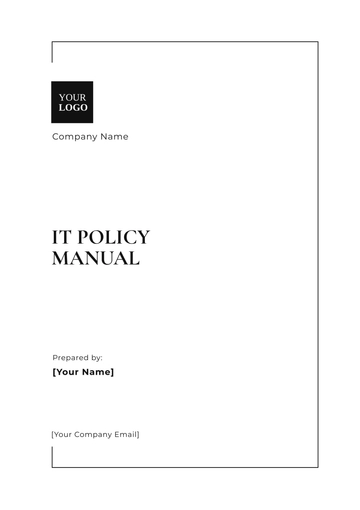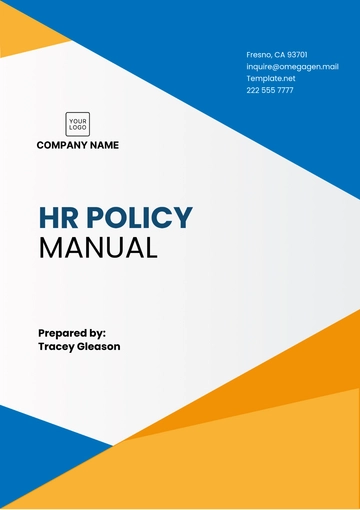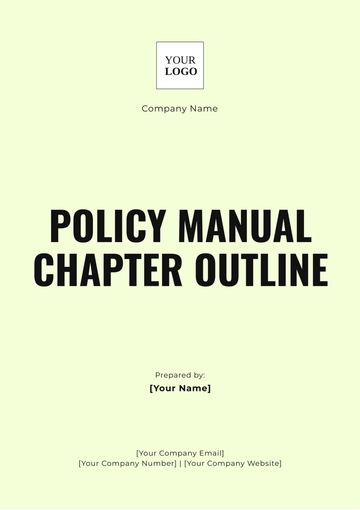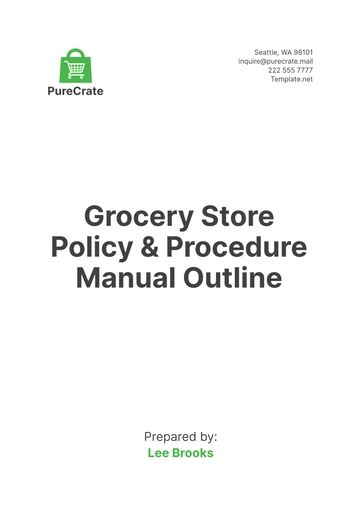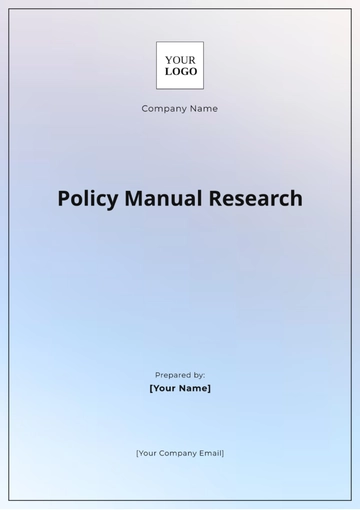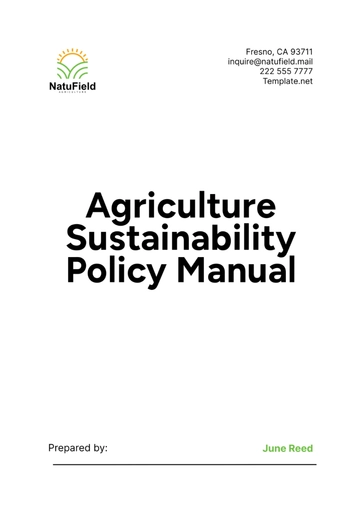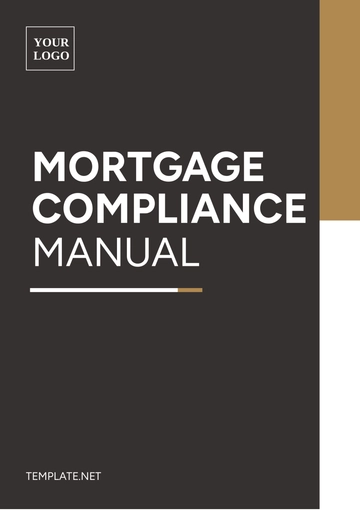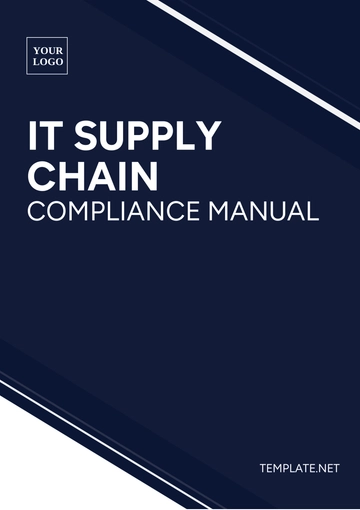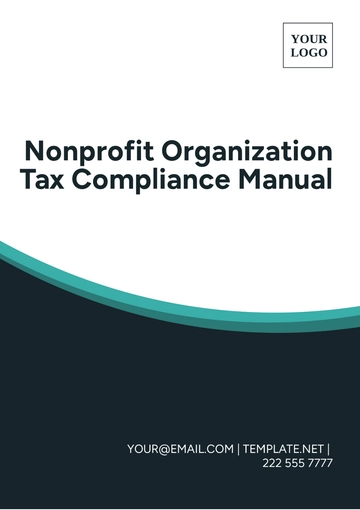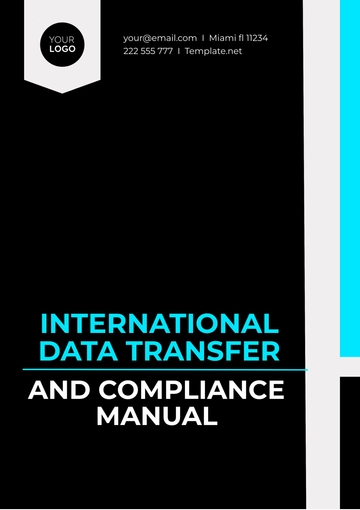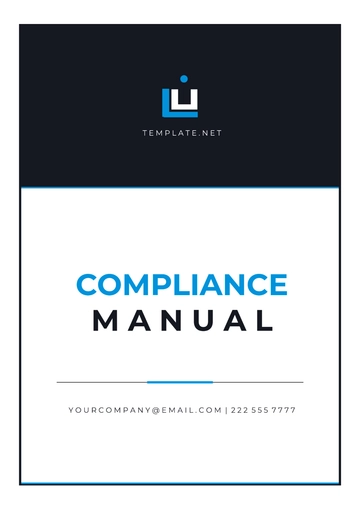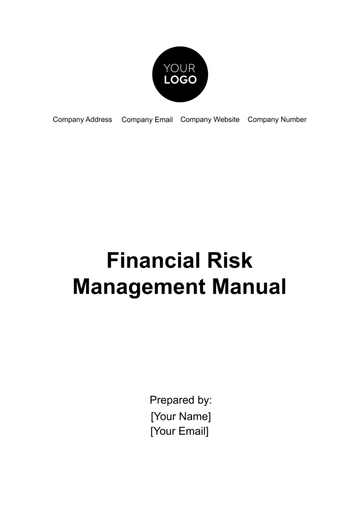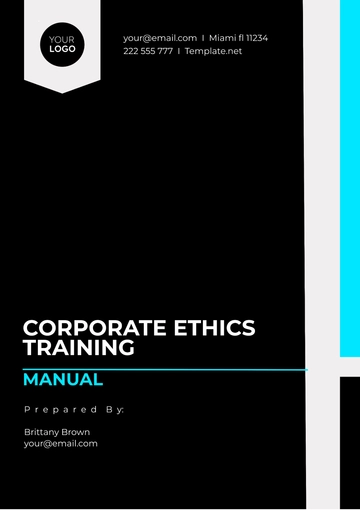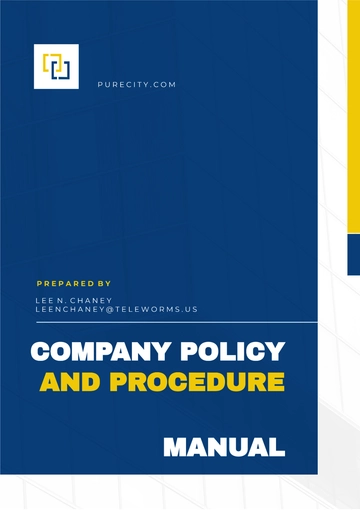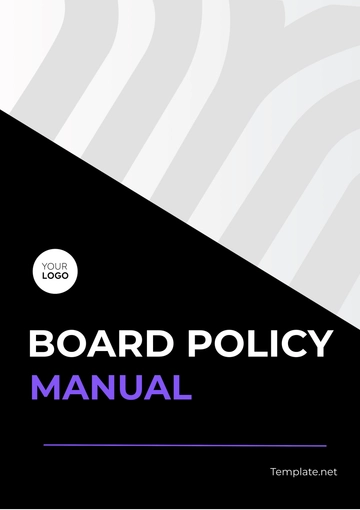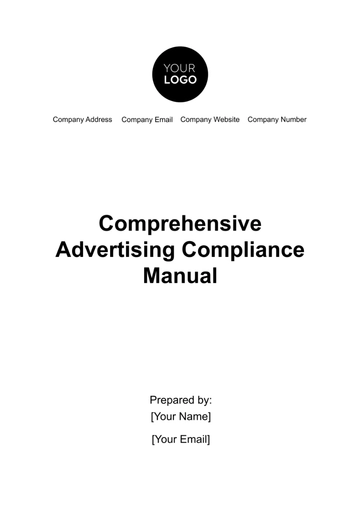Free Financial Compliance Policy & Procedure Manual
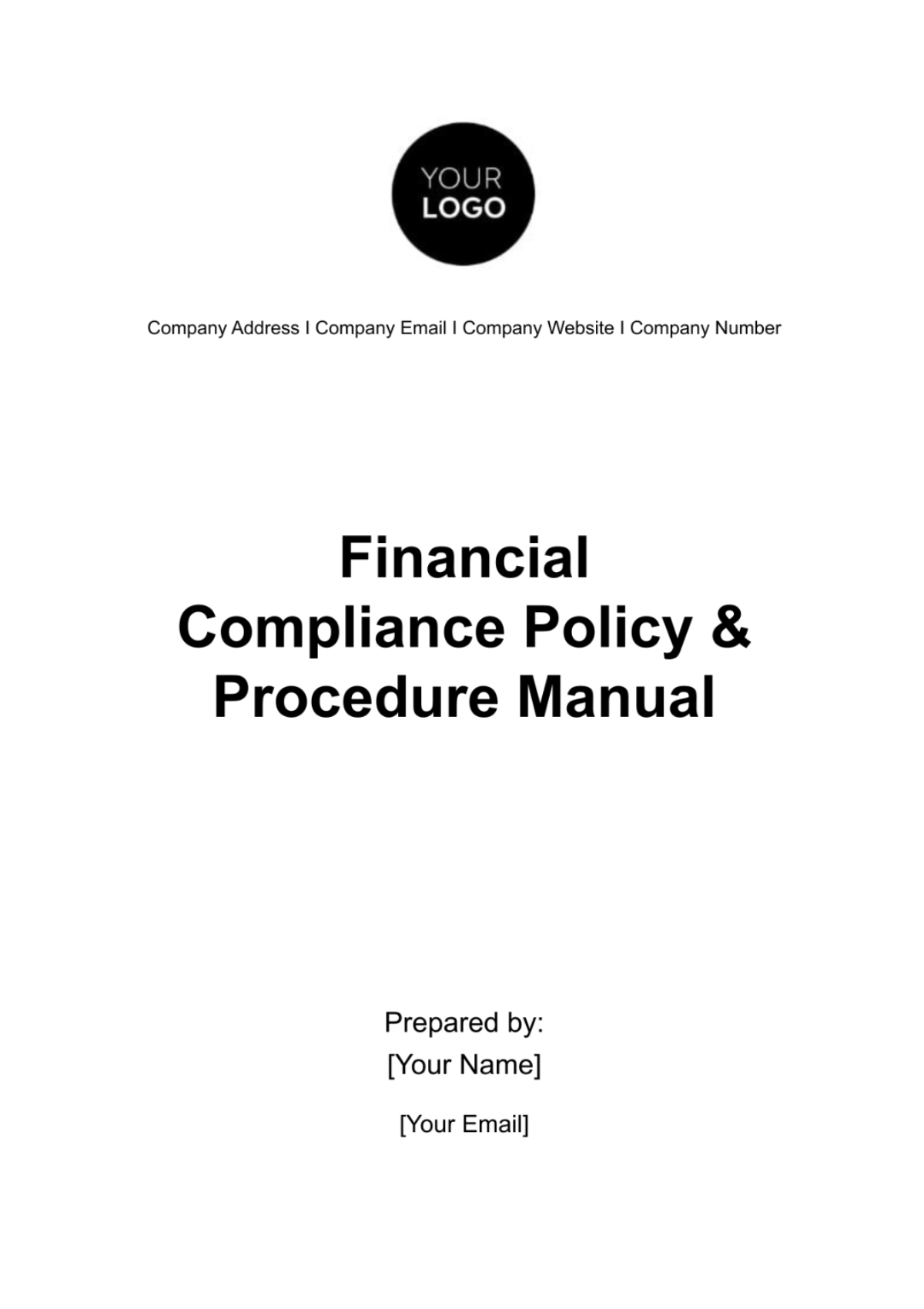
I. Introduction
The Financial Compliance Policy & Procedure Manual of [Your Company Name] serves as a guiding document to ensure all financial activities comply with relevant laws and ethical standards. The purpose of this manual is to establish a clear framework for financial compliance within our organization, applicable to all employees and departments.
This document outlines the procedures, responsibilities, and expected conduct related to financial operations and reporting. It's designed to foster a culture of transparency and integrity in all financial matters.
II. Legal Framework and Regulatory Requirements
Our company operates within a complex legal framework that includes federal, state, and international financial regulations. All employees must understand the impact of these regulations on our daily operations and strategic decisions.
Summary of Relevant Laws and Regulations
We adhere to regulations including the Sarbanes-Oxley Act for corporate governance, the Dodd-Frank Act for financial reforms, and the IRS tax codes. Each of these impacts various aspects of our financial operations from reporting standards to executive accountability.
Regulatory Bodies and Their Roles
Regulatory Body | Jurisdiction | Key Regulations |
|---|---|---|
SEC | Securities & Exchange | Securities Act, Exchange Act |
IRS | Taxation | Internal Revenue Code |
FINRA | Securities & Brokerage Firm | Brokerage regulations, Market conduct |
Regular updates will be provided on changes such as amendments in tax laws, new SEC guidelines on corporate disclosures, or updates in international financial reporting standards. These updates are critical for ensuring ongoing compliance.
III. Organizational Structure and Responsibilities
Ensuring compliance requires a structured approach to responsibility and communication. Our structure is designed to clearly delineate roles and facilitate efficient communication.
Compliance Officer and Team Structure
The Chief Compliance Officer (CCO) leads the Compliance Department. The team is structured to cover various areas of compliance, from training to monitoring and enforcement.
Role | Responsibilities |
Board of Directors | Oversee and approve compliance policies |
CCO | Develop and enforce compliance strategies |
Employees | Adhere to compliance policies and report violations |
A clear communication protocol is in place for reporting and addressing compliance issues, involving direct reporting to supervisors or the Compliance Department, as appropriate.
IV. Policies and Procedures for Key Areas
We have established detailed policies and procedures in several key areas to ensure financial compliance across the organization.
Revenue Recognition
Policy: Revenue is recognized in accordance with GAAP, ensuring that it's recorded when it's realized and earned.
Procedure: All contracts are reviewed by the accounting department to identify performance obligations and determine the transaction price.
Expenditure Control
Policy: All expenditures must be approved by the respective department heads and verified against the budget.
Procedure: Purchasing requests are submitted through our internal system and must include quotes and authorization codes.
V. Risk Assessment and Management
Understanding and managing risks is crucial for maintaining compliance and ensuring the financial health of [Your Company Name].
Identifying and Assessing Financial Risks
A continuous process is in place to identify and assess risks that could impact financial reporting, market position, or compliance status. We use a combination of industry analysis, historical data, and predictive modeling to identify risk factors. Each identified risk is then assessed for its potential impact and likelihood, allowing us to prioritize our management efforts effectively.
Risk Mitigation Strategies
For each high-priority risk, we develop and implement specific strategies aimed at mitigating the risk. This might include diversifying investment portfolios, enhancing security measures, improving internal controls, or obtaining insurance coverage. Each strategy is accompanied by clear implementation steps, responsible parties, and expected outcomes.
Monitoring and Reviewing Risks
Our internal audit team, along with the risk management committee, is responsible for the ongoing monitoring of risks and the effectiveness of mitigation strategies. They use a range of tools and techniques, including regular audits, key risk indicators, and employee feedback. The risk profile is reviewed regularly to ensure it reflects the current environment, with adjustments made to strategies as necessary.
VI. Compliance Training and Awareness
To foster a culture of compliance, we provide comprehensive training and promote awareness across the organization.
Regular Training Programs
We conduct mandatory training programs for all employees on a regular basis. These programs cover various aspects of financial compliance, including laws and regulations, company policies, ethical conduct, and reporting mechanisms. The content is tailored to different roles and departments, ensuring relevance and effectiveness.
Awareness Campaigns and Communications
In addition to formal training, we run ongoing awareness campaigns using posters, emails, and intranet articles. These campaigns highlight important compliance topics, share updates on laws and regulations, and provide tips for maintaining compliance in daily work.
Training Records and Compliance
We maintain detailed records of all training activities, including attendance and assessment results. Compliance with training requirements is monitored closely, and non-compliance is addressed promptly to ensure that all employees have the necessary knowledge and skills.
VII. Monitoring and Auditing
Regular monitoring and auditing are key to detecting and addressing compliance issues early.
Ongoing Monitoring Procedure
Our compliance department conducts continuous monitoring of business activities, looking for signs of potential non-compliance or emerging risks. This includes reviewing financial transactions, assessing control effectiveness, and analyzing compliance reports.
Internal and External Auditing
We conduct regular internal audits to assess compliance with laws, regulations, and internal policies. In addition, we engage external auditors to perform periodic reviews, providing an independent assessment of our compliance status and financial reporting.
Handling of Identified Non-compliance
When potential non-compliance is identified, it is logged and investigated promptly. The investigation aims to determine the cause and extent of the issue and to identify appropriate corrective actions. Results are reported to senior management and the board, along with recommendations for preventing similar issues in the future.
VIII. Reporting Violations and Whistleblower Protection
We encourage employees to report any suspected violations and provide strong protection for whistleblowers.
Procedures for Reporting Violations
Employees are instructed on how to report suspected violations, with multiple channels available to ensure accessibility and confidentiality. This includes an anonymous hotline, a dedicated email address, and direct reporting to supervisors or the compliance department.
Protection Measures for Whistleblowers
We are committed to protecting whistleblowers from retaliation, discrimination, or harassment. Our policies clearly prohibit any adverse action against individuals who report violations in good faith, and we have mechanisms in place to investigate and address any complaints of retaliation.
Investigation Process for Reported Violations
All reports of suspected violations are taken seriously and investigated thoroughly. The process includes gathering and reviewing evidence, interviewing relevant parties, and making a determination based on the findings. Investigations are conducted in a fair and impartial manner, ensuring confidentiality and due process.
IX. Record Keeping and Documentation
Maintaining accurate and secure records is essential for compliance and effective risk management.
Requirements for Record Retention
Our policies specify the types of records that must be retained, the required retention period, and the format of storage. This includes financial records, compliance reports, training records, and documentation of investigations.
Secure and Accessible Documentation
We use a secure electronic recordkeeping system to store all compliance-related documents. The system is designed to ensure the security and confidentiality of records while providing appropriate access for audits and reviews.
Data Privacy and Protection
We comply with all applicable data protection laws, ensuring that personal and sensitive information is collected, used, and stored responsibly. Our policies cover data handling procedures, access controls, and breach response.
X. Compliance Review and Improvement
We are committed to continuously improving our compliance program to address new challenges and changes in the regulatory environment.
Regular Review of Compliance Policies and Procedures
Our compliance department conducts regular reviews of all policies and procedures to ensure they remain effective and relevant. This includes assessing changes in laws and regulations, business operations, and industry best practices.
Process for Updating the Manual
Changes to the compliance manual are made systematically, with proposed updates reviewed and approved by senior management and the board. Once approved, changes are documented and communicated to all employees through training and other communications.
Continuous Improvement Strategies
We encourage feedback from employees, auditors, and other stakeholders on how to improve our compliance program. This feedback, along with lessons learned from audits and investigations, is used to make ongoing improvements.
XI. Policy Enforcement and Disciplinary Actions
We enforce our compliance policies strictly and fairly, with clear consequences for non-compliance.
Consequences of Non-Compliance
The potential consequences for violating compliance policies are clearly outlined and vary depending on the severity of the violation. They may include retraining, warnings, fines, demotion, termination, or legal action.
Disciplinary Process and Actions
The disciplinary process is clearly defined and includes steps for investigating alleged violations, determining appropriate actions, and implementing those actions. It ensures fairness and consistency while providing due process for the accused.
Appeal Process for Disciplinary Actions
Employees have the right to appeal disciplinary actions through a formal grievance process. The appeal process is designed to ensure that appeals are reviewed impartially and that employees have an opportunity to present their case.
XII. Conclusion and Commitment
In conclusion, this manual reflects [Your Company Name]'s unwavering commitment to financial compliance. We believe that adhering to these policies and procedures is essential for maintaining our integrity, reputation, and success. We expect all employees to be familiar with this manual and adhere to its guidelines in their daily work activities.
- 100% Customizable, free editor
- Access 1 Million+ Templates, photo’s & graphics
- Download or share as a template
- Click and replace photos, graphics, text, backgrounds
- Resize, crop, AI write & more
- Access advanced editor
Template.net offers the Financial Compliance Policy & Procedure Manual Template, a vital, editable, and customizable resource for businesses. This template provides a structured approach to documenting and maintaining compliance standards, ensuring adherence to financial regulations. It's an essential tool that is editable using our Ai Editor Tool which is crafted for accuracy and professional integrity. Depend on Template.net for reliable compliance solutions.
